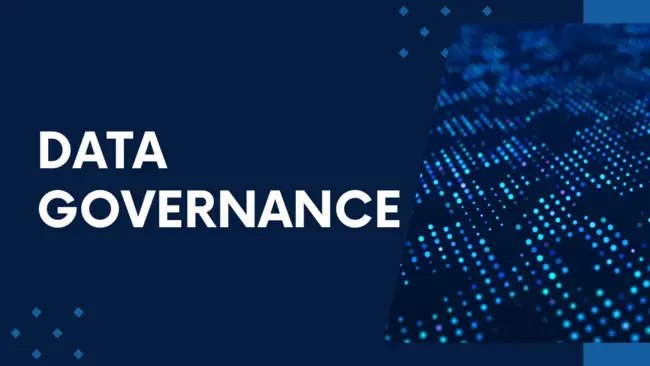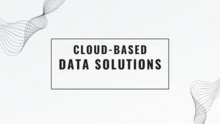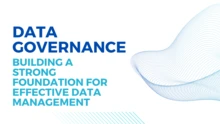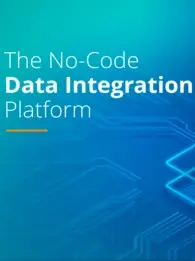
All corporations collect, create, and communicate distinct data assets. At the same time, if one of their business intelligence components becomes a target of cyberattacks, they lose credibility. Global or local, all enterprises risk losing market share without stakeholders’ faith in the brand. Therefore, all businesses must integrate data governance to safeguard their IT operations. This post will discuss how data governance assists in establishing order in modern data chaos.
What is Data Governance for Business Compliance?
Across the enterprise information systems, data governance can encompass data access, processing, and communication protocols. It helps avoid confusion, financial fraud, data leaks, cyber threats, and human errors. Its actual implementation might involve developing accounting and authorization standards adequate for data safety.
Today, organizations leverage data governance services to optimize costs and benefit from specialists’ expertise. They demand cloud migration, automation, accounting precision, firewalls, encrypted communication, and multifactor authentication. Some providers exclusively support governments and regional defense departments. Still, private firms can utilize military-grade data protection technologies in data governance strategies.
Scope of Data Governance
A data governance model affects the rules and roles in the decision-making activities of an organization. So, leaders can trace documentation errors or deliberate misreporting attempts. This approach defines the boundaries, overseeing the usage ethics and security requirements concerning each company’s in-house IT systems.
For instance, data governance software can restrict new employees from modifying project-critical financial data. Therefore, senior officers might check and approve their work before sharing the modified reports with other data solutions.
The Roles and Responsibilities of a Data Governing Officer
A data governing officer (DGO) must be adequately skilled enough to handle multidisciplinary information. To prevent unnecessary or insecure overlaps between the different business units, an ideal DGO shall be actively involved in the following activities, guiding the respective teams.
-
Appointment of new candidates for a multidisciplinary role,
-
Prevent data losses due to corporate espionage and accidental database changes,
-
Educating employees on access authorization and version control skills,
-
Specifying each worker’s job description and scope of work,
-
Enforcing the data governance frameworks by initiating disciplinary actions for wrongdoing stakeholders,
-
Periodically review and update the data governance frameworks for all stakeholders.
The DGO must hold meetings to discuss a decision that affects a team responsible for specific operational issues. Most data governing officers will allow the team members to explain their side before proceeding with punitive actions.
Data governance also limits the excessive sharing of business-critical data between different departments in the same company. Doing so is essential to improving productivity, reducing human errors, efficient communication, and creating a culture of accountability.
Components of Data Governance Establishing Order in Data Chaos
1| Change Logs and Version Control for Real-Time Collaborations
What will happen if ten employees edit a file or a database simultaneously? Consistency issues will appear if several professionals collaborate through cloud or shared IT resources while the net connectivity is unreliable. If every employee is working on a separate section, technical conflicts are less likely to arise.
The integrity of the file content decreases because of the poorly synchronized modifications. So, this situation results in the final draft being incomprehensible or self-contradictory.
Data governance strategies ensure workers use technologies facilitating change logs and version control. Besides, authentic real-time collaboration must help teams handle data objects without interfering with each other’s work. So, DGOs must integrate stable and fast web connectivity.
A change log and version control are excellent for tracking all modifications within a data asset. After all, an ideal workflow must attribute each file modification to the originating employee and department.
2| Data Protection Technologies
A firewall selectively permits or prevents internet connection requests to maintain digital hygiene. While technical professionals will avoid visiting unknown websites or using notorious software, others might engage in these activities. They can jeopardize your networked resources’ resilience of data packet spoofing, ransomware, and cyberattacks based on identity theft.
Likewise, data governance teams can request all teams to install and launch a virtual private network (VPN). VPNs provide an additional approach to online anonymity by masking users’ actual geolocation configuration. Therefore, all governments and companies must use VPN clients to access the internet for sensitive communications. VPNs help reduce location-based cyber threats and online harassment.
Moreover, all communication must happen over encrypted channels. Finally, periodic malware scans, updating operating systems in all workstations, and conducting employee training on responsible technology usage are important in data governance strategies.
What to Consider Before Selecting Data Governance Frameworks
-
Data governance frameworks let businesses restrict access, modification, and approvals at different employee levels. For example, an external auditor must have the “read” privileges, while in-house accountants must also get “write” privileges. Select your governance technologies based on these practical aspects.
-
There must be an intuitive system of editing, approving, and sharing rights. Remember, your data governance ecosystem must not annoy the employees, contractors, independent consultants, and investors with a hard-to-follow user experience. Otherwise, complex user interfaces will increase employee training costs.
-
Also, finding high-quality data governance strategies has become easier across many industries. The rising adoption of environmental, social, and governance (ESG) might be a catalyst since data governance belongs to its third pillar.
-
Responsible business managers must network with the right professionals who have a track record crafting many enterprise data governance frameworks. This suggestion is crucial because hiring inexperienced governance officers or advisors will increase risks instead of mitigating them.
Which Data Governance Model Will be Ideal for Your Organization?
Each business has unique teams. No two companies can copy a data governance model for the staff and protocols. Thus, keep the following principles in mind when creating data governance specifications.
-
The idea of tracking employees in real time is exciting. However, is this necessary for all roles, departments, and work packages? Will this feature break privacy-related laws? A data governance platform might provide you with such features. However, your IT administrators must mostly use the necessary ones.
-
Data governance exists to create a culture of accountability, rightful ownership, and rapid resolutions to disputes. So, senior professionals must not use it as an excuse to exploit or threaten the employees. Corrective measures must not feel revengeful, indicating the need to let employees know why they received disciplinary actions. An ideal governance program must automate this task.
-
The hacking of major firms by an outside party often makes the headlines. Therefore, companies lose reputation, customer base, and investor relationships. Still, hiding cybersecurity vulnerabilities is not an ethical response to data loss events. Doing so can increase legal risks and alienate more stakeholders. Therefore, the data governance model must discourage such activity, promoting immediate engagement with security experts.
Conclusion
Initially, data governance principles seem contradictory. After all, it must track how your employees interact with business intelligence assets without disrespecting labor rights and privacy regulations.
Nevertheless, reputed brands can seek advice from firms famous for establishing order in data chaos through tried-and-tested data governance strategies. They will provide a balanced framework where employee and employer interests align. The future of business administration relies on responsible data operations, and data governance models help secure it.












